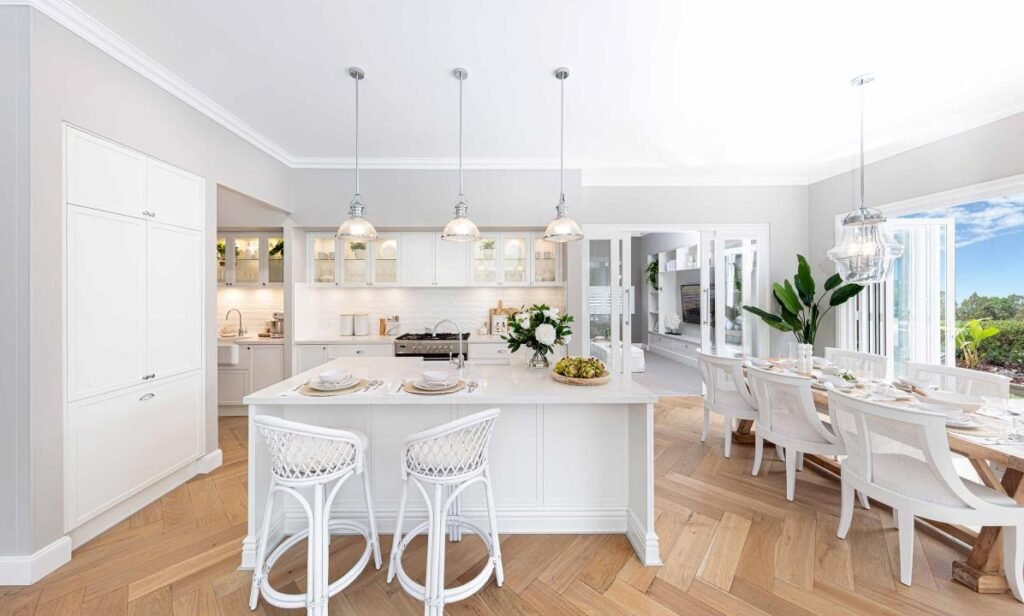Choosing a home style is one of the most exciting parts of designing or buying a house. Your home should reflect your personality, lifestyle, and aesthetic preferences, so it’s important to pick a style that feels just right. Modern and traditional designs are two of the most popular architectural styles, each offering its own distinct charm and benefits. But how do you decide which one suits you best? Let’s explore the key differences between modern and traditional home styles to help you make an informed choice.
Defining Modern Homes: Sleek, Minimal, and Forward-Thinking
Modern homes are all about simplicity and functionality. Influenced by mid-20th-century design, this style embraces clean lines, open spaces, and an emphasis on natural light. If you appreciate a minimalist aesthetic with a “less is more” mindset, a modern home might be calling your name.
In modern homes, the architecture often features flat or low-pitched roofs, large windows, and open floor plans that create a seamless flow between spaces. The materials used lean toward the industrial—think steel, glass, and concrete—blended with organic elements like wood and stone to maintain warmth.
One of the main appeals of modern homes is their adaptability to today’s lifestyle. With smart home technology, energy-efficient features, and a focus on sustainable design, modern homes prioritize convenience and environmental responsibility. If you’re dreaming of a sleek kitchen with streamlined cabinets or a spacious living room with floor-to-ceiling windows, modern might be your style.
Exploring Traditional Homes: Timeless, Cozy, and Full of Character
Traditional homes, on the other hand, offer a sense of nostalgia and charm that many find irresistible. Drawing from classic architectural styles like Colonial, Victorian, and Craftsman, traditional homes prioritize detail, symmetry, and craftsmanship.
These homes often feature pitched roofs, brick or stone exteriors, and decorative elements like shutters, moldings, and gables. Inside, you’ll find defined rooms rather than open layouts, creating a cozy, intimate atmosphere. Materials like hardwood floors, ornate light fixtures, and plush furnishings contribute to a timeless aesthetic.
Traditional homes are perfect for those who value comfort and character. They evoke a sense of stability and tradition that appeals to families or anyone who wants a house with a story. Imagine curling up by a fireplace surrounded by intricate woodwork—traditional homes excel at creating that warm, inviting feel.
Comparing Lifestyle Fit: What Works for You?
The choice between modern and traditional often comes down to your lifestyle. Modern homes are ideal for those who crave flexibility and functionality. Open floor plans are perfect for entertaining or keeping an eye on kids while cooking dinner. The emphasis on large windows and natural light suits anyone who loves a bright, airy space.
Traditional homes, however, cater to a more segmented lifestyle. If you prefer defined rooms for specific activities—like a formal dining room for family meals or a separate office for remote work—a traditional home offers that structure. Families often appreciate the privacy that comes with traditional layouts, as each space feels distinct and personal.
Design and Décor: What’s Your Style?
Your personal taste in décor can also guide your decision. Modern homes are a natural fit for those who love minimalism, neutral color palettes, and sleek furniture. They allow bold, contemporary art or statement pieces to shine without overwhelming the space.
Traditional homes, in contrast, are perfect for layering textures and patterns. If you adore rich colors, antique furniture, and detailed accessories, a traditional home provides the perfect canvas. Think Persian rugs, classic chandeliers, and floral prints—traditional interiors invite you to embrace coziness and character.
Blending the Two: A Happy Medium
If you’re torn between modern and traditional, you’re not alone. Many homeowners today are opting for transitional designs that combine the best of both worlds. A transitional home might feature a modern open floor plan with traditional finishes, like crown molding or a stone fireplace. This style allows for creativity and flexibility, making it a popular choice for families who want timeless elegance with contemporary conveniences.
Considering Outdoor Spaces
When choosing your home style, don’t forget the exterior and outdoor areas. Modern homes often incorporate seamless indoor-outdoor living, with sliding glass doors that open to patios or courtyards. In contrast, traditional homes emphasize picturesque yards with defined landscaping and charming porches.
If you’re planning additional features like a pool, the home style can influence the design. For instance, League City pool builders often tailor modern pool designs with clean, geometric shapes and infinity edges for contemporary homes, while more traditional pools might include curved edges or decorative tiles to match classic architecture.
Resale Value: What Will Buyers Want?
It’s also wise to consider the future. Modern homes appeal to buyers who value sustainability, technology, and contemporary design, making them a solid choice in growing urban markets. Traditional homes, with their timeless appeal, often attract families and those looking for a classic, “forever home.” If you’re thinking about resale, understanding your local market’s preferences can help guide your decision.
Conclusion: The Perfect Home for You
Modern or traditional—it’s not just a choice of style; it’s a reflection of how you live and what makes you feel at home. Modern homes offer innovation and simplicity, while traditional homes provide comfort and timeless charm. Take your time exploring what matters most to you, from layout and design to functionality and aesthetics. No matter what you choose, your dream home should feel like an extension of who you are—and a place you can’t wait to return to every day.
